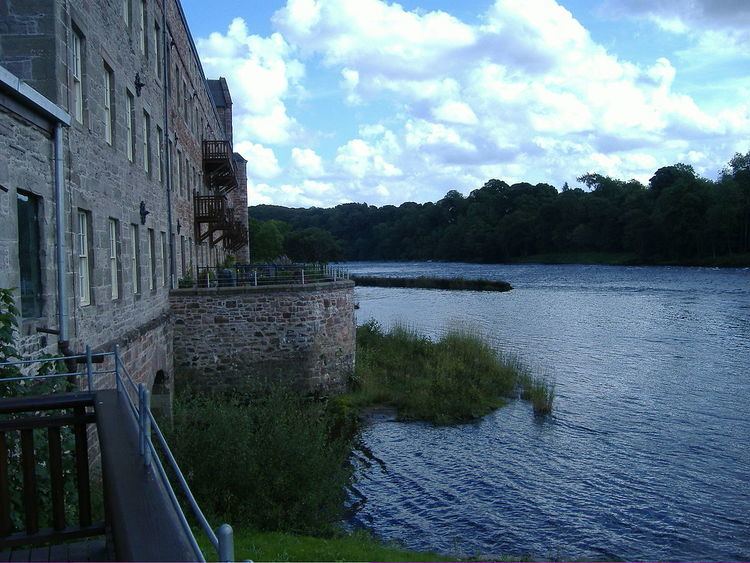Population Unknown | OS grid reference NO114328 Sovereign state United Kingdom Postcode district PH1 | |
 | ||
Weather 4°C, Wind W at 11 km/h, 77% Humidity | ||
Salmon fishing scotland farlows tay opening at stanley perthshire 2014
Stanley is a village on the north side of the River Tay in Perthshire, Scotland, just north of Perth.
Contents
- Salmon fishing scotland farlows tay opening at stanley perthshire 2014
- Etymology
- History
- Stanley Mill
- Railway
- Ballathie House
- References
This section of the River Tay is a popular location for canoeing and fishing.
Etymology
The village of Stanley gains its name from Lady Amelia Stanley, the daughter of James Stanley, 7th Earl of Derby. In the 1600s the area around Stanley was part of the estate of Earls of Atholl and was also the location of Inchbervis Castle. In 1659 the castle was renamed Stanley House in honour of the wedding of John Murray, 1st Marquess of Atholl and Lady Stanley. When the village was built in the 1700s it took the name Stanley after the nearby house.
History
John Murray, the 4th Duke of Atholl, decided, in the 18th century to harness of the nearby River Tay to power a cotton mill., Richard Arkwright, an inventor of cotton-spinning machinery was persuade by, George Dempster (the Local MP), when Dempster was visiting Cromford in Derbyshire, to come to Scotland to set up a cotton mill in Stanley as well as one at New Lanark. Stanley Mills opened in 1787, and by its 10th year employed 350 people.
The village of Stanley was built to house the workers of the mill. Work on the village began in 1784. It was designed by the Duke of Atholl’s factor James Stobie. By 1799 the village’s population was around 400, and by 1831 it had reached around 2000 residents, about 50% of whom worked in the mill.
Stanley Mill
Stanley was largely founded to house workers for a huge mill on the banks of the River Tay.
The mill was originally water-powered but was later converted to steam and finally to electric power. For most of its history it produced cotton thread, but in the 20th century changed to cigarette ribbon. The Dempster & Co company was established in 1787 by seven men including Richard Arkwright, George Dempster and William Sandeman to build the mill on land feued from the Duke of Atholl to provide employment to Highlanders affected by the clearances. A fire in 1799 destroyed a large section of the mill and it reopened in 1802, partly with advice from David Dale of New Lanark (which it closely resembles).
The mill used coal gas for lighting until 1921, when this was replaced by a hydroelectric power plant, which was built to also supply electricity to the village. The power station was closed in 1965 but was reopened in 2003 by npower (UK).
From the 1960s the mill was in decline, and it finally closed down in 1989. After that the mill fell derelict. Historic Scotland bought the mill in 1995 and over the next ten years, in liaison with the Phoenix Trust, the buildings renovated and turned into private flats plus a museum depicting life in the 19th century and the story of the mill.
Railway
A railway station was built in Stanley in 1848. This later evolved into a junction station, as it lay at the point where the branch line to Forfar broke off from the main line from Perth to Inverness. The Perth Inverness line still runs though the village, however, but the station was closed in 1956.
Ballathie House
Ballathie House was built during the 1850s near Stanley. It was built by the Robertson family, the land having originally been owned by the Drummond family, the Earls of Perth. Since 1972 it has operated as a country house hotel.
